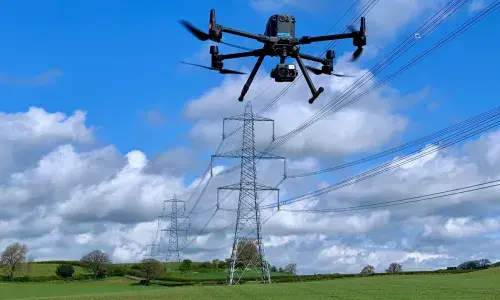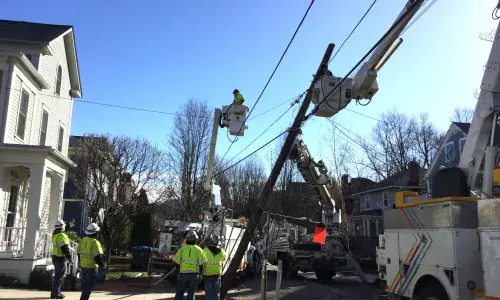
Green bonds funding sustainable projects
Following the successful launch of our first green bonds in the UK and US, our first Green Financing Report reveals exactly how these funds were used to finance clean energy projects that support the decarbonisation of our networks and protect our natural environment.
Green bonds and loans raise funds for new and existing projects that deliver environmental benefits and a more sustainable economy, such as transitioning to renewable energy and carbon-free transport.
A brief history of our Green Bonds
In November 2019, National Grid made the first step in its sustainable finance journey by publishing a Green Financing Framework, reviewed by independent third party DNV-GL, that sets out how we can issue green bonds and loans.
In the UK, National Grid Electricity Transmission (NGET) issued its first ever green bond of €500 million in January 2020, followed by three smaller green bonds with sizes of HK$ 422 million, $85 million and €100 million. Proceeds of these bonds were swapped into approximately £618 million.
In the US, the Niagara Mohawk Power Corporation (NIMO) issued the first green bond from one of National Grid’s US entities for $600 million in June 2020.
Finally, in April 2020 we secured the first ever multi-export agency (ECA) covered green loan, worth $743 million, to fund the Viking Link interconnector.
Supporting our transition to clean energy and our commitment to reach net zero
The bonds and loan allow institutional investors, such as banks and pension funds, to be involved in our commitment to reach net zero, while supporting our transition to clean energy. Our first green bond attracted over 170 investors and the NIMO bond was oversubscribed with 100 investors.
Fulfilling our commitment to provide information to investors on the impact of their investments is our newly published Green Financing Report, which PriceWaterhouseCoopers LLP has provided assurance on.
As well as details on how the bond proceeds have been allocated, the report also includes information on the environmental impact of these projects by category, including estimated avoided carbon-dioxide (CO2) emissions and energy savings.
“National Grid is committed to acting responsibly and with transparency in everything we do”, says Alexandra Lewis, Group Treasurer of National Grid. “We are proud to publish our Green Financing Report, which responds to our pledge for clear disclosure, transparency and integrity of our green financing instruments. It’s yet another step along in our responsible business pathway.”
The selection criteria for eligible green projects
Each green financing project is evaluated and chosen by National Grid’s Green Financing Committee, chaired by Alexandra Lewis and made up of employees from our finance and sustainability teams, as well as those working within each of the UK regulated, US regulated and National Grid Ventures businesses.
The key selection criteria for the eligible green projects are their contribution to sustainable development, environmental benefits in helping reduce climate change and contribution to the energy transition.
Five essential green categories for funding
Proceeds from the NGET and NIMO green bonds have been used to fund projects falling under five essential green categories:
- Renewable energy, such as the connection to our transmission system of the Nemo Link interconnector – a giant undersea cable for renewable energy – between Richborough in the UK and Zeebrugge in Belgium, and rooftop solar panels connected directly into the distribution grid in Buffalo, New York state.
- Energy efficiency, like investment in battery energy storage systems – essential to the reliable transmission of renewable energy.
- Clean transportation, such as the installation of electric vehicle charging ports at workplaces, malls and public parking areas in NIMO’s service territory.
- Pollution prevention and control, such as the Rochester Airport Cable Refurbishment, which included retiring the pressurised oil equipment and therefore reducing the risk of any environmental pollution.
- Environmentally sustainable management of land and natural living resources, such as the Visual Impact Provision projects that replace overhead lines with underground cables in Areas of Outstanding Natural Beauty in the UK.


